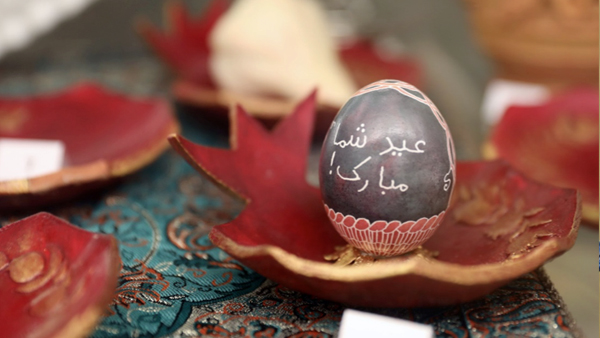|
Please join the Library Diversity Committee in collaboration with the Persian Cultural Club and The Middle East Studies Program at Fresno State, as we celebrate the International Day of Nowruz, welcoming spring through the months of March and April by visiting our exhibit in the Library Diversity Lounge, Henry Madden Library, 2nd Floor North.
Nowruz is a celebration of the beginning of spring. It takes place on March 21 and is recognized by more than 300 million people worldwide as the beginning of the New Year. Nowruz has been celebrated for over 3,000 years in the Balkans, the Black Sea Basin, the Caucasus, Central Asia, the Middle East and other regions.
In 2010 the United Nations General Assembly recognized the International Day of Nowruz. The U.N. also welcomed the inclusion of Nowruz into the Representative List of the Intangible Cultural Heritage of Humanity by UNESCO on September 30, 2009. This display is an opportunity for the campus and Fresno community to get acquainted with the tradition of different countries (Iran, Afghanistan, Pakistan, Tajikistan and India) where Nowruz is celebrated.
These special artifacts shed light on Nowruz and its rich cultural traditions.
To add to this exhibition, Julie Moore (Madden Library) asked one of the curators, Dr. Negin Tahvildary, some questions about this celebration.
1. Please tell us about Nowruz.
- Nowruz, is a Persian word composed of two parts: “Now” (meaning “New” in Farsi) and “Ruz” (meaning “Day”); thus, “New Day.” The date falls on the vernal spring equinox and for the last 3000 year, Nowruz has been celebrated in Iran and parts of Mesopotamia as the New Year. United Nations’ Resolution A/RES/64/253 recognizes March 21st as the International Day of Nowruz, and “encourages Member States to make efforts to raise awareness about Nowruz and to organize annual events in commemoration of this festivity.” Nowruz is also mentioned in the Representative List of the Intangible Cultural Heritage of Humanity by UNESCO.
2. Please explain the (cultural, religious, symbolic) significance of the Nowruz Haft-Seen Table.
- The main part of this festivity includes setting up a table, called Haft-Seen. “Haft” in Farsi means “seven” and “Seen” is the equivalent of letter “S”. Therefore, the seven essential items on the Haft-Seen table start with the letter “S”. Below is a list of the items and their significance (1-7). All objects on the table are symbolic; a few other elements and symbols may also be included on the table (8-14).
- Sabzeh: sprouts, represents rebirth.
- Samanu: wheat sprout pudding, represents transformation.
- Seeb: apple, represents beauty.
- Senjed: the sweet, dry fruit of the Lotus tree, represents love.
- Seer: garlic, represents health.
- Somaq: sumac berries, represent good conquers evil.
- Serkeh: vinegar, represents patience.
- Coins represent prosperity and wealth.
- Painted eggs represent fertility.
- Seville orange floating in a bowl of water represents the earth floating in space.
- Goldfish in a bowl represents life.
- Pot of flowering hyacinth represents spring.
- Mirror represents the images and reflections of Creation.
- Two candlesticks holding a flickering candle; the candles represent enlightenment and happiness.
3. As an outsider to this culture, I am very impressed with high level of detail and craftsmanship that has gone into the beautiful artifacts. Would you please highlight some of the items in the exhibit?
- Actually, I asked my students to visit the exhibit and reflect on one item that stood out to them, was new information, or impressed them most. Many of them believed what caught their attention the most were the paintings, “as they were very vivid in color.” Most items showcased in this library exhibit are handmade artifacts and heirlooms from the countries that celebrate Nowruz as an ancient festivity. Just by looking at the colorful artworks, one can feel that a celebration is being portrayed. The harmonious geometric shapes of items, the meanings behind every symbol, the details and nuances of each artifact, all in all contributes to highlight the poetic aspects of Nowruz.

|
|
Mina: Enameling
|
|



